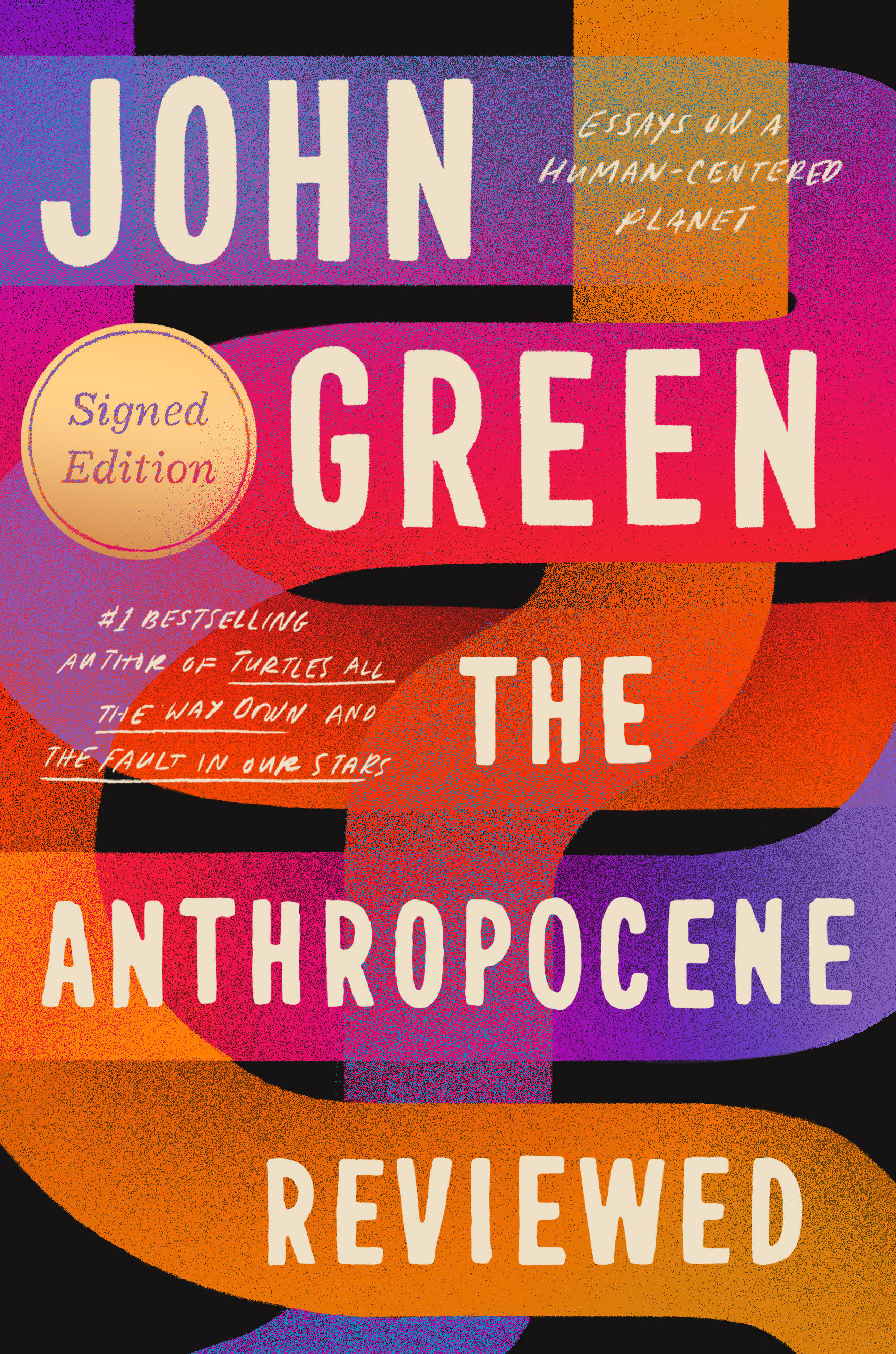- The Good: Wide-ranging collection of essays on the human experience
- The Bad: Formulaic, with some topics more interesting than others
- The Literary: Plenty of historical, artistic, and literary references
We live on a human-centered planet, or at least we think we do. John Green’s collection of essays from his podcast reviews different facets of the world that our human activity has so thoroughly shaped. Green reviews each topic on a five-star scale, and topics range from the QWERTY keyboard and Halley’s Comet to the Penguins of Madagascar movie.
I like the idea of reviewing concepts and things that aren’t normally reviewed; it’s a cute gimmick that works well here. The essays cover a wide variety of topics, some more interesting than others. Most, if not all, are quite personal, both in the sense that Green is giving his own ratings based on his own experiences, but also because they contain stories from his own life.
The best essays—the five-star ones, if you will—are contemplative, deeply personal, and focus on anxiety, chronic pain, illness, and death, but are ultimately hopeful in their focus on human connection. This is what John Green does best and echoes his most successful novels, The Fault in Our Stars and Turtles All the Way Down. See “Staphylococcus Aureus”, “Harvey”, “Hiroyuki Doi’s Circle Drawings”, and “Viral Meningitis”.
The next tier of essays are the ones that are inspiring, and I noted a few books he references to read later. These tend to be either scientific (and mention John’s scientist brother Hank), or artistic (and mention John’s artist wife Sarah), or share some tidbit of human history . See “Halley’s Comet”, “Lascaux Cave Paintings”, “Air-conditiong”, “Auld Lang Syne”, “Monopoly”, and “Plague”.
The remainder of the essays are about sports or COVID-19 (which tend to highlight the presence or lack of human connection), or about mid-western cities or weather or animals or plants (which focus on seeing the best of a situation). These are all interesting to read, but are generally forgettable.
In addition, the essays tend to follow the same pattern, which becomes very repetitive if they are read too close together. Think of the five paragraph structure many of us were taught in high school, but updated to modern standards. Typically each essay begins with a John Green memory, from which a topic is introduced, then a little history or context is provided, some quotes from other famous people are sprinkled thoroughout, followed by a circling back to the personal story, with a final hopeful conclusion.
There’s something else about this book too; a certain white-collar NPR-listening perspective that rankles me. Some of the stories are about vacationing at Disney World or in Iceland, or the Green family second-home cabin John visited as a child, or attending a private boarding school, and most don’t have the self-awareness of priviledge. But there’s also something very familiar about many of the chosen topics, like I’ve heard the same anecdotes featured in the liberal media or YouTube or podcasts before, and I’m worried we’re all just passing around the same stories in a self-agrandizing bubble of aren’t we all so smart and interested in the world. Maybe I’m just in a cynical mood.
All that said, John Green’s writing is earnestly full of hope and wonder. He shares himself so freely, and when you feel alone, in pain or grief, his work has this capacity to speak to the frightened inner child in the deepest parts of us. His best essays (and novels) bring tears to my eyes and make my heart feel full of love for the people in my life and the wonder that brought me into this beautiful and terrible world.
Recommended for fans of the Green brothers or anyone who enjoys non-fiction essays.
